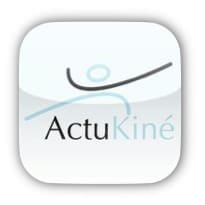(…)
Improved muscle strength was significantly associated with reductions in NRS pain {B coefficient -2.5 [95% confidence interval (CI) -3.7 to -1.4], meaning that every change of 1 unit of strength was linked to a change of -2.5 units of pain}, WOMAC physical function (-8.8, 95% CI -13.4 to -4.2) and get-up-and-go test (-1.7, 95% CI -2.4 to -1.0). Improved proprioception was not significantly associated with better outcomes of exercise therapy (P>0.05).
(…)
Upper leg muscle strengthening is one of the mechanisms underlying the beneficial effects of exercise therapy in patients with knee OA.
Références bibliographiques :
Knoop J et al. Improvement in upper leg muscle strength underlies beneficial effects of exercise therapy in knee osteoarthritis: secondary analysis from a randomised controlled trial. Physiotherapy. 2015 Jun;101(2):171-7. doi: 10.1016/j.physio.2014.06.002.


